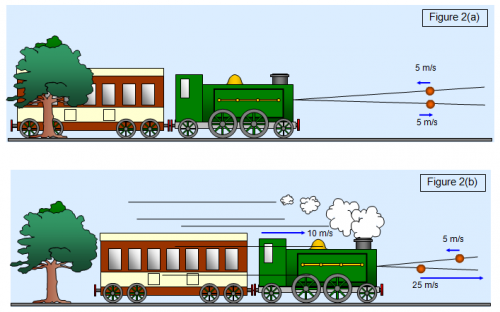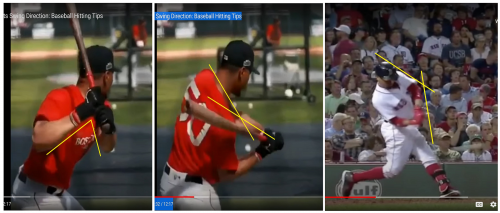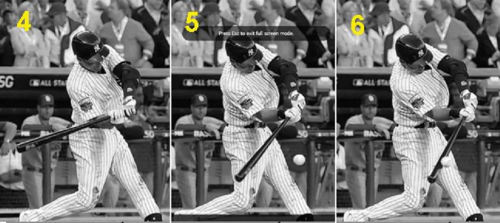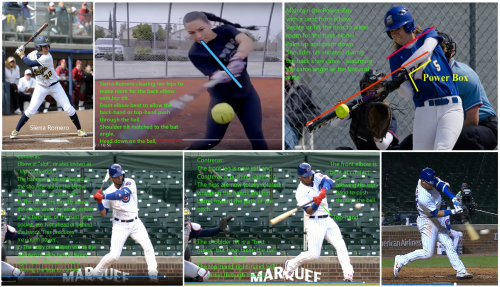First off, this pitch may have been low-outside. Don't honestly know. But I have some Betts photos for you. Maybe you can give them some suggestions for that elbow.
Secondly as I have said a few times before, effective hitting, pitching, throwing, etc are governed by the laws of physics. There are no exceptions. Walking to the refrigerator and putting that cool-aid or beer to ones lips is governed by the same laws. The law of physics most closely associated with hitting is called "The Conservation of Angular Motion". And since I teach a combination of linear/rotational principles it is very relevant. The further the reach of the bat-head gets from the body, the slower the swing velocity because the swing becomes purely rotational. It is just like an ice-skater pulling their arms and legs in to make their rotation faster. It is part of why the back elbow is attempted to stay close to the side of the body. It is an effort to make the swing a little more linear. Linear energy is more efficient than rotational energy. It is the idea of a glancing blow as opposed to a direct hit. And the difference in the energy transferred can be huge. It is why the front elbow is bent, to allow projection (punch) of the back-arm or top-hand extension through the ball. A purely rotational bat-head with arm-bar is that less efficient transfer of energy, and produces an angular impact to the ball.

In figure (a) the train is not moving. The ball will bounce off at relatively 5 meters per second. In (b) the speed of the train (10mps) adds to the speed of the ball, so it is 5mps + 10mps. The ball moves at 5 m/s relative to the ground (that is 15 m/s relative to the train). It hits the train and rebounds at 15 m/s relative to the train. But the train is moving at 10 m/s relative to the ground and so the ball rebounds at 15+10 = 25 m/s relative to the ground. It is a calculation of increased kinetic energy translated into velocity. Now assume that the impact is not direct, but cuts across the flight of the ball and that the train is moving from left to right at 10 meters per second, the same speed. Because it is a glancing blow, caused by a rotational movement of the barred bat swing, the energy transfer will be less. And this is just a theory of mine, but rational. That is that a player who swings with a barred front arm may prefer an end loaded bat to compensate. A "wrist-active" hitter may prefer a more balanced bat. You think this is bad, you should see my paper on pitching velocity! My photos tell a story too. The second set with Romero are from a flyer I send in instructional materials to remote towns, villages, etc on one of the 7200+ islands here.




Last edited:






